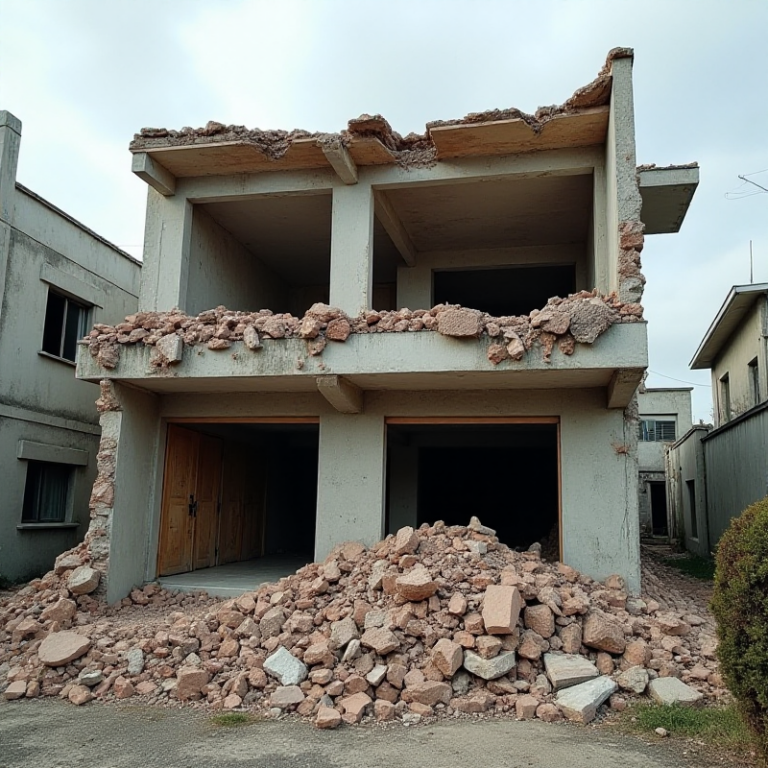Earthquake survival guides are critical for ensuring safety and readiness during these unpredictable natural disasters. Preparing for an earthquake involves more than just securing your home; it’s about having a complete plan that you, your family, and even your community can follow. This guide provides essential tips for before, during, and after an earthquake to keep you and your loved ones safe.
1. Preparing Your Home and Family
Securing your living environment is one of the most effective measures for surviving an earthquake. Here’s how to get started:
a. Secure Heavy Objects: Anchor heavy furniture such as bookshelves, cabinets, and appliances to walls. Use brackets and safety straps to prevent them from toppling over.
b. Identify Safe Spots: Determine safe places in each room. This could be under a sturdy table or against an interior wall away from windows and tall furniture.
c. Emergency Supplies Kit: Assemble a survival kit containing:
- Water (one gallon per person per day for at least three days)
- Non-perishable food
- Flashlight and extra batteries
- First aid supplies
- Whistle for signaling help
- Multi-tool or wrench for turning off utilities
d. Family Communication Plan: Create a strategy for reconnecting with your family members if separated. Designate an out-of-town contact person everyone can reach to check in.
2. What to Do During an Earthquake
Staying calm during an earthquake is essential. Follow these guidelines to increase your safety:
a. Drop, Cover, and Hold On: If you are indoors, drop to your hands and knees, cover your head and neck under a sturdy table or furniture, and hold on until the shaking stops.
b. Stay Indoors: Avoid running outside during the shaking; exterior walls are often the most dangerous part of a building.
c. Keep Away from Windows: Shattered glass can cause serious injuries. Position yourself away from windows, mirrors, and any glass objects.
d. If You Are in Bed: Stay there and protect your head with a pillow, unless you are under a heavy light fixture or an unstable ceiling fan.
3. Safety Measures for Outdoor and Vehicle Situations
If you are outside when an earthquake strikes, there are specific actions to take to protect yourself:
a. Move Away from Buildings: Head to an open space away from structures, power lines, trees, and streetlights.
b. Driving Tips: Pull over to a safe spot, avoiding bridges, overpasses, and power lines. Keep the vehicle stationary with the parking brake engaged until the shaking ends.
4. After the Earthquake: Staying Safe Post-Shock
The aftermath of an earthquake can be just as dangerous as the event itself. Take these steps to stay safe:
a. Check for Injuries and Provide First Aid: Treat any injuries with your first aid kit, and only move seriously injured individuals if they are in immediate danger.
b. Inspect Your Home for Hazards: Check for gas leaks, electrical issues, and structural damage. If you smell gas, turn off the main valve, open windows, and evacuate immediately.
c. Be Prepared for Aftershocks: These secondary tremors can follow the main earthquake and may cause further damage. Continue using “Drop, Cover, and Hold On” if they occur.
d. Stay Informed: Use a battery-powered radio to listen for emergency updates and instructions from local authorities.
5. Community and Long-term Preparation
Community readiness is vital for post-earthquake recovery. Get involved and encourage neighborhood preparedness:
a. Join or Organize Earthquake Drills: Practicing evacuation plans with neighbors and participating in community safety drills can make the difference when an earthquake strikes.
b. Share Resources: Work with your community to pool emergency supplies and skills. This collective approach can help maintain morale and boost safety.
c. Strengthen Your Home: Retrofitting older homes with reinforced foundations and flexible utility connections can reduce damage during seismic activity.
Conclusion
Following this Earthquake Survival Guide ensures that you and those around you are prepared to face an earthquake with confidence. Taking proactive measures before, during, and after the event can significantly reduce injuries and enhance recovery. Remember, the more prepared you are, the safer you will be when the ground starts shaking.
Related article: How to Prepare for a Major Flood Safely



